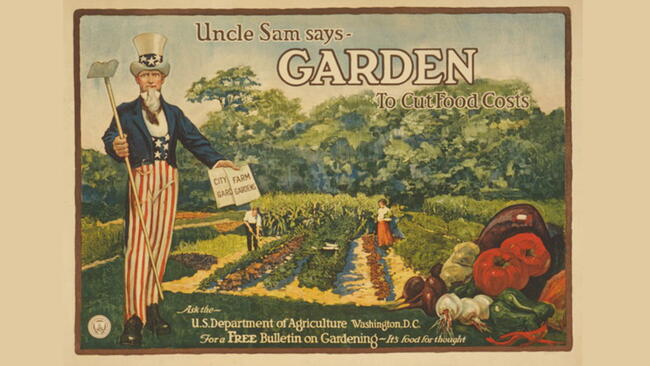I count among my greatest achievements the fact that I’ve eaten something from the hillside garden behind my house or the wild land around it nearly every day for more than 45 years.
What a miraculous fact of daily life that the ground beneath our feet passes into plants, then into ourselves and becomes our bones, blood and tears.
We are stardust, we are golden, we are billion year old carbon,
And we got to get ourselves back to the garden.
–Crosby, Stills, Nash, & Young
Can you think of any another activity that simultaneously serves as many individual and community needs as food gardening?
Why Do We Love Gardening?
Consider these reasons …
- Gardening activities burn calories, build muscle, strengthen bones, and improve mood.
- Of necessity, most gardeners learn to cook, and many become good at it.
- Many studies demonstrate that gardening can ease depression and calm anxiety.
- As one of few activities that can include family members of all ages working alongside one another, gardening promotes family well-being.
- A garden serves as a natural classroom where children learn about the natural world. Gardening allows children to contribute directly to the household economy.
- Gardening builds community. Private gardens beautify rural and suburban neighborhoods for all to enjoy. Community garden plots transform vacant city lots, reduce crime, and the build community among the people who nurture them.
- Gardening fosters learning, teaching and sharing activities that forge connections among friends and neighbors.
- Home gardens and fruit orchards can put a big dent in the costs of community trash disposal, as kitchen wastes, leaf piles, lawn clippings, garden debris, wood ashes and many other organic materials are recycled into composts and mulches.
- Stronger individuals, stronger families, and stronger communities strengthen national security as effectively as military might, maybe more.
- Finally, gardening connects us globally, one to another. Food production is the only essential human activity. The need to produce food crosses barriers of culture, race, ethnicity, religion and disability. Home gardeners and subsistence growers around the world share a common “culture” and speak a common language, a language that can connect us all when words fail.
Though large and productive, my food garden is a messy, humble enterprise that wouldn’t make the cover of a glossy gardening magazine.
I don’t romanticize the work of it, either. Tending a big food garden demands hard labor, discipline, skill, and faithfulness. Although the garden requires knowledge and many different competencies, it delivers mysteries beyond the realms of facts and science.
Human life—my life—depends utterly on the on the alchemy of soil and sun and green leaves. All the great cycles of organic life repeat endlessly in the garden.
Ground Yourself
On the inner side of my life, my vegetable garden has grounded me. Even though the work of it takes place on many levels, gardening is intensely physical. Direct contact with the soil, hacking away at the vicious hardpans underlying my topsoil, hauling endless loads of rock, turning compost, spreading mulch.
These concrete activities have allowed many raw spaces in my psyche to heal. I’ve done a powerful load of grieving, raging, crying, shrieking and celebrating up there among my cabbages and onions.
“Food will win the war” was a popular slogan during both World Wars I and II. Victory Gardens were important symbols of patriotism. Home gardeners helped conserve resources vital to the war effort and made up for severe labor shortages in the agricultural sector. Gardens also gave emotional and spiritual strength to the folks on the home front.
Beyond a patch of good dirt (or a few tubs of potting soil), hand tools, and seeds, home food producers don’t need much by way of tools and equipment to raise fruits and vegetables. A plot managed with intensive techniques can easily yield 10 times the produce of a more conventional garden.
Psychologists tell us many Americans have difficulty imagining their futures. Allow me to share what I imagine for myself: This spring, I am planting half again as many roasting peppers, 100 strawberry plants, and 1000 onion seedlings, but only half the tomatoes I planted last spring.
It’s that simple.










Comments